Thingiverse

3Drag Central belt z-axis with trapezoidal leadscrew by fede27
by Thingiverse
Last crawled date: 2 years, 12 months ago
English Below
Questa è una versione alternativa dell'idea di sgabolab di asse Z centrale per 3Drag.https://www.thingiverse.com/thing:1496357
NB. Controllare subito se la chiocciola della vostra barra è compatibile con questo design (controllare con il file trapezoidal_nut in stp o stl).
Non si ricerca un'aumento della risoluzione elettronica (step/mm) ma un miglioramento della meccanica.
Occorrente:
Barra trapezoidale 40 o 50 cm diametro 8 mm (8mm/giro) e sua chiocciola
Una cinghia T5 chiusa lunga 245 mm
Una puleggia T5 10 denti
2 x cuscinetti skf 6004 o equivalenti
3 x M5 x 10 mm a testa cilindrica
10 x M5 x 12 mm a testa cilindrica
2 x M5 x 70 mm a testa cilindrica (o esagonale)
2 x M3 x 16
12 x dadi M5
4 x M3 x 40 mm (da tagliare poi a misura)
4 x M3 x 8 mm a testa cilindrica
4 x dadi M3
4 x grani M3 (lunghi 6 o 8 mm)
Rondelle M5 e M3
Si vedano le immagini per il montaggio. Il concetto è: la chiocciola ruota supportata dal banco di cuscinetti e fa avanzare verso l'alto la barra filettata che è connessa rigidamente agli elementi traslanti lungo Z (in pratica non è più la barra filettata a ruotare su se stessa ma la chiocciola).
Il rapporto di trasmissione tra motore e vite è 4/1. Per quattro giri del motore se ne ottiene uno della chiocciola.
Considerando un microstepping di 1/16 si hanno le seguenti risoluzioni:
Barra da 8mm/giro -> L'asse Z fa 2 mm/giro -> 1600 step/mm -> 0.625 um/step
Queste configurazioni sono state studiate per utilizzare altezze di layer multiple di 0.01 mm in quanto uno step intero del motore produce nei 3 casi un avanzamento di 2mm/200=0.01 mm. Infatti è buona norma utilizzare altezze di layer multiple del full step del motore (Vedere per approfondimenti http://manual.slic3r.org/troubleshooting/troubleshooting#z-wobble).
P.S. assicuratevi che il moto retrogrado della chiocciola sia impedito durante la stampa.
Ricorda inoltre di cambiare il parametro step/mm dell'asse Z della tua stampante!!!
ENGLISH:
This is a mod of the first idea of central z-axis for 3Drag by Sgabolab.https://www.thingiverse.com/thing:1496357
NB. Check immediately if your trapezoidal nut fits this design (See trapezoidal_nut in stl or stp format).
This design improves the Z-axis of 3Drag from a mechanical point of view. The final electronic resolution is not higher than the standard one.
You need:
A trapezoidal lead screw (diameter 8 mm) of length 40 or 50 cm (8mm/turn).
A closed T5 belt of length 245 mm
A 10 teeth T5 pulley
2 x skf 6004 ball bearings.
3 x M5 x 10 mm with socket head
10 x M5 x 12 mm with socket head
2 x M5 x 70 mm with socket head
2 x M3 x 16
12 x M5 nuts
4 x M3 x 40 mm (then you have to cut a little bit these M3 screws)
4 x M3 x 8 mm with socket head
4 x M3 nuts
4 x M3 set screws (of length 6 or 8 mm)
Various M3 and M5 washers
See the images for the assembly.
The belt has a ratio of 4/1 (four tuns of the motor correnspon in one turn of the trapezoidal nut). You get the following resolution (with 1/16 microstepping):
8mm/turn leadscrew -> The Z axis moves 2 mm/turn -> 1600 step/mm -> 0.625 um/step
This configuration have been studied to use layer heigth multiple of 0.01mm. This because a full step of the motor corresponds to 2mm/200=0.01 mm. A layer height multiple of the full step of the stepper motor (in mm) is a good choice (see http://manual.slic3r.org/troubleshooting/troubleshooting#z-wobble)
P.S. Pay attention to the backward motion. You have to avoid backward motion of the nut during printing.
Remeber to update the steps/mm parameter of the Z axis of your printer.
Questa è una versione alternativa dell'idea di sgabolab di asse Z centrale per 3Drag.https://www.thingiverse.com/thing:1496357
NB. Controllare subito se la chiocciola della vostra barra è compatibile con questo design (controllare con il file trapezoidal_nut in stp o stl).
Non si ricerca un'aumento della risoluzione elettronica (step/mm) ma un miglioramento della meccanica.
Occorrente:
Barra trapezoidale 40 o 50 cm diametro 8 mm (8mm/giro) e sua chiocciola
Una cinghia T5 chiusa lunga 245 mm
Una puleggia T5 10 denti
2 x cuscinetti skf 6004 o equivalenti
3 x M5 x 10 mm a testa cilindrica
10 x M5 x 12 mm a testa cilindrica
2 x M5 x 70 mm a testa cilindrica (o esagonale)
2 x M3 x 16
12 x dadi M5
4 x M3 x 40 mm (da tagliare poi a misura)
4 x M3 x 8 mm a testa cilindrica
4 x dadi M3
4 x grani M3 (lunghi 6 o 8 mm)
Rondelle M5 e M3
Si vedano le immagini per il montaggio. Il concetto è: la chiocciola ruota supportata dal banco di cuscinetti e fa avanzare verso l'alto la barra filettata che è connessa rigidamente agli elementi traslanti lungo Z (in pratica non è più la barra filettata a ruotare su se stessa ma la chiocciola).
Il rapporto di trasmissione tra motore e vite è 4/1. Per quattro giri del motore se ne ottiene uno della chiocciola.
Considerando un microstepping di 1/16 si hanno le seguenti risoluzioni:
Barra da 8mm/giro -> L'asse Z fa 2 mm/giro -> 1600 step/mm -> 0.625 um/step
Queste configurazioni sono state studiate per utilizzare altezze di layer multiple di 0.01 mm in quanto uno step intero del motore produce nei 3 casi un avanzamento di 2mm/200=0.01 mm. Infatti è buona norma utilizzare altezze di layer multiple del full step del motore (Vedere per approfondimenti http://manual.slic3r.org/troubleshooting/troubleshooting#z-wobble).
P.S. assicuratevi che il moto retrogrado della chiocciola sia impedito durante la stampa.
Ricorda inoltre di cambiare il parametro step/mm dell'asse Z della tua stampante!!!
ENGLISH:
This is a mod of the first idea of central z-axis for 3Drag by Sgabolab.https://www.thingiverse.com/thing:1496357
NB. Check immediately if your trapezoidal nut fits this design (See trapezoidal_nut in stl or stp format).
This design improves the Z-axis of 3Drag from a mechanical point of view. The final electronic resolution is not higher than the standard one.
You need:
A trapezoidal lead screw (diameter 8 mm) of length 40 or 50 cm (8mm/turn).
A closed T5 belt of length 245 mm
A 10 teeth T5 pulley
2 x skf 6004 ball bearings.
3 x M5 x 10 mm with socket head
10 x M5 x 12 mm with socket head
2 x M5 x 70 mm with socket head
2 x M3 x 16
12 x M5 nuts
4 x M3 x 40 mm (then you have to cut a little bit these M3 screws)
4 x M3 x 8 mm with socket head
4 x M3 nuts
4 x M3 set screws (of length 6 or 8 mm)
Various M3 and M5 washers
See the images for the assembly.
The belt has a ratio of 4/1 (four tuns of the motor correnspon in one turn of the trapezoidal nut). You get the following resolution (with 1/16 microstepping):
8mm/turn leadscrew -> The Z axis moves 2 mm/turn -> 1600 step/mm -> 0.625 um/step
This configuration have been studied to use layer heigth multiple of 0.01mm. This because a full step of the motor corresponds to 2mm/200=0.01 mm. A layer height multiple of the full step of the stepper motor (in mm) is a good choice (see http://manual.slic3r.org/troubleshooting/troubleshooting#z-wobble)
P.S. Pay attention to the backward motion. You have to avoid backward motion of the nut during printing.
Remeber to update the steps/mm parameter of the Z axis of your printer.
Similar models
thingiverse
free

3Drag Central z-axis with trapezoidal leadscrew, (Velleman k8200) by fede27
...have to avoid backward motion of the nut during printing.
remeber to update the steps/mm parameter of the z axis of your printer.
thingiverse
free

3Drag Central z-axis by Pietro92
...dale t8 da 8mm lunghezza 350mm
per il fissaggio sono stati utilizzati 4 perni m5 e 4 bulloni m3 per il fissaggio della chiocciola
thingiverse
free

zbox with clearance compensation, 3drag no wobble z axis by fede27
...system minimizes z-wobbling and z-ribbing.
print all the pieces and follow the assembly sequence shown in the pictures!
enjoy it!
thingiverse
free

E3d for 3drag k8200 by Pietro92
...erse
fissagio e3d v5/v6 per 3drag. il tutto è stato progettato per facilitare la manutenzione o sostituzione di eventuali parti.
thingiverse
free

3DRAG/K8200 Z-Axis Supports 1.0 (motor) by Puck3D
... te!
questo upgrade è composto da 4 thing!
questa è la parte del motore.
le altre parti : http://www.thingiverse.com/thing:676957
thingiverse
free

Z-axis for 3Drag/K8200 My solution: zero wobbling, zero backslash, 4 options by sillano
...p by step guide, for a complete solution tailored according to the needs.
see the file 3drag-zaxis-en.pdf, or 3drag-zaxis-it.pdf.
thingiverse
free

z axis for plotter by gitamani
...5x9 mm - rondella 1x stepper motor nema17 o similar: i used an eleks maker 42hs34-1304a 2x screw m3x10...
thingiverse
free

Volkswagen Golf vite fissaggio coprimotore. Fixing srew for motor cover by mattersi91
...lf 4 1.8t gti. probabilmente la vite è identica per tutti i modelli di golf. stampare in abs a causa delle temperature del motore
thingiverse
free

K8200/3DRAG dual motor Z axis with Trapezoid rods (K8204) by ExaZ
...200/3drag dual motor z axis with trapezoid rods (k8204) by exaz
thingiverse
motor-holder:http://www.thingiverse.com/thing:167650
thingiverse
free

SILVELOX OVERLAP CLIP SOSTEGNO BARRA ESAGONALE by riclip
... che si rompa. potrebbe essere necessario qualche colpo di lima per allargare la scanalatura di ingresso in modo da non sforzare.
Fede27
thingiverse
free

Apollo rocket shot glass by fede27
...apollo rocket shot glass by fede27
thingiverse
a simple glass for your shots!
inspired from apollo rocket
thingiverse
free

Flip flops havaianas repair by fede27
...print it with 100% infill!
you need one small wood screw to fix the printed part to the flip flop.
see the attached images.
enjoy
thingiverse
free

3Drag Hotend: CAD of the PTFE parts by fede27
... by fede27
thingiverse
cad files (.iges and .stl) of the 3drag hotend.
parti cad (.iges and .stl) dell'hotend della 3drag.
thingiverse
free

Darth Vader bookmark, star wars by fede27
...erse
a funny bookmark with darth vader face!!!
scale it as you prefer. i uploaded also the solid model (.igs)
enjoy it!
federico
thingiverse
free

Mark Bass logo, bass guitar amplifier by fede27
...er by fede27
thingiverse
mark bass logo!
i uploaded also the dxf contour for a quick edit (for mounting design purposes).
enjoy!
thingiverse
free

3Drag E3D lite6 Transformation by fede27
...ili all'installazione del lite6 (hotend prodotto da e3d) sulla tua 3drag!
hotend altamente raccomandato! funziona molto bene!
thingiverse
free

Sony HDR Action Cam Holder by fede27
...t versions to hold the sony action cam attached to a 10 mm smooth rod.
i uploaded also the solid model for faster changes.
enjoy!
thingiverse
free

3Drag 1.75 mm filament transformation by fede27
...basta cambiare la parte originale come indicato in figura (la parte nuova è quella verde all'interno dell'ellisse rosso).
thingiverse
free

Graphic LCD mount 3Drag Velleman k8200 by fede27
... grafico full graphic smart controller (reprapdiscount). con queste due parti è possibile fissare l'lcd al telaio della 3drag
thingiverse
free

E3D lite 6 hotend CAD Model by fede27
...erse.com/thing:341689 i created the complete cad model of the e3d lite6 hotend. here you can find the solid model in .stp.
enjoy!
3Drag
thingiverse
free

3DRag Enclousure by gigi78
...sure for 3drag
plexiglass enclosure with aluminum rod
http://www.guadagna-scrivendo.it/3drag/chiusura-per-stampante-3d-3drag/
thingiverse
free

3Drag CHOCO by GabrieleDaghetta
...
3d name to apply on m8 threaded rod of the 3drag choco printer.
3drag site: http://www.open-electronics.org/3drag-3d-printer/
thingiverse
free

Paraluce 3drag by MARCONE67
...paraluce 3drag by marcone67
thingiverse
paraluce 3drag
thingiverse
free

3drag XXL by deltaforce
...eltaforce
thingiverse
quando le dimensioni di stampa della 3drag non bastano più, si può trasformarla in una super stampante xxl
thingiverse
free

Pen Holder for 3Drag printer by GabrieleDaghetta
...ter. it utilizes an elastic band to hold the pen against the plate.
3drag site: http://www.open-electronics.org/3drag-3d-printer/
thingiverse
free

3Drag CHOCO side plate by GabrieleDaghetta
...late that falls from the syringe while the printer is on standby.
3drag site: http://www.open-electronics.org/3drag-3d-printer/
thingiverse
free

K8200/3dRag Reel Holder by willygroup
...k8200/3drag reel holder by willygroup
thingiverse
another reel holder for k8200/3drag
thingiverse
free

3DRag Cnc Parkside Lidl by gigi78
...3drag cnc parkside lidl by gigi78
thingiverse
adaptator for 3drag cnc parkside lidl
thingiverse
free

k8200 3Drag Anti-Vibration by unkapputtbar
...k8200 3drag anti-vibration by unkapputtbar
thingiverse
some anti-vibrations for k8200 or 3drag
thingiverse
free

K8200 / 3DRAG lcd support by Frank3
...k8200 / 3drag lcd support by frank3
thingiverse
change lcd support for 3drag / k8200
Leadscrew
thingiverse
free
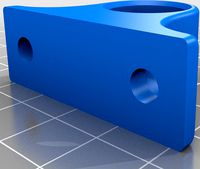
Leadscrew Support by The_Custom_Side
...w support for 8mm leadscrew.
printed in 0.25mm petg
requires bearing (16mm od, 8mm id).
no supports, no rafts, 20% gyroid infill.
thingiverse
free
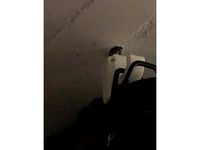
Hook for M8 Leadscrew
...hook for m8 leadscrew
thingiverse
hook which holds on m8 leadscrew without pressure on the screw
thingiverse
free
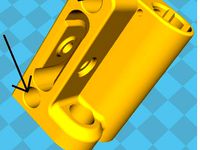
X Idler Leadscrew by GOO2014
...x idler leadscrew by goo2014
thingiverse
x idler leadscrew
thingiverse
free
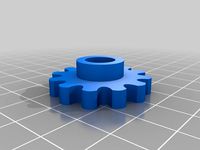
10mm Leadscrew Knob by carboncopy101
...10mm leadscrew knob by carboncopy101
thingiverse
this is a knob for a 10mm leadscrew for manual turning. enjoy.
thingiverse
free

nut for m5 leadscrew by mbzn
...nut for m5 leadscrew by mbzn
thingiverse
created to use as a nut for m5 threaded bar in place of a leadscrew
thingiverse
free
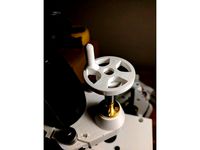
8mm Leadscrew Crank by dakahler
...igned for the cyclone pcb, but can be used on any 8mm leadscrew.
the captive nut for the set screw is designed to be heat-staked.
thingiverse
free

Z leadscrew support for KFL08 by bajmar
...z leadscrew support for kfl08 by bajmar
thingiverse
z leadscrew support for kfl08
thingiverse
free

X-Axis Leadscrew Idler by brisinger
...x-axis leadscrew idler by brisinger
thingiverse
x-axis leadscrew idler
thingiverse
free
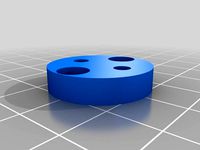
Leadscrew Adapter by PhoenixZip
...rew, and it does not fit our lorei printers.
this adapter allows use of holes that are 16mm apart to our (roughly) 11.85mm holes.
thingiverse
free

Trintcore z-axis modified leadscrew by grubeludouche
... modified leadscrew by grubeludouche
thingiverse
this is a mod to fit a t8 pitch leadscrew, replacing the original m8 leadscrew.
Trapezoidal
turbosquid
$10

TRAPEZOID TABLE FOR KITCHEN/DINING ROOM - STEEL/WOOD MATERALS
...kitchen/dining room - steel/wood materals for download as max on turbosquid: 3d models for games, architecture, videos. (1270095)
3d_ocean
$5

WGS Stool by Gallotti&Radice
...minimalistic modern radice seat seating simple steel stool trapezoid trapezoidal wgs general this is the model of the original...
3ddd
free

Ковры Baxter Fifties
... ковер
три ковра baxter:
fifties hexagon,
fifties trapezoid,
fifties triangle.
размер 250x200
3d_export
$20

duplex with 2 bedrooms
...exterior and interior white finish<br>2- supporting masonry structure<br>3- white trapezoidal sheet cover<br>4-does not have mep...
3d_export
$45

Different gems cut set 77 items
..., trapezoid, marquise, princess, oval, heart, emerald, baguette, trilliant, etc. items regular round diamonds in different sizes.
3d_export
$25

duplex with 3 bedrooms
...exterior and interior white finish<br>2- supporting masonry structure<br>3- white trapezoidal sheet cover<br>4<br>-does not have mep...
3ddd
$1

Gaudi Calvet chair
...est is the use of a single support to join the seat to the backrest.
material: varnished solid oak
measurements: 52 x 94 x 54 cm
thingiverse
free

Trapezoid
...trapezoid
thingiverse
trapezoid
thingiverse
free

Trapezoid
...trapezoid
thingiverse
a 6 inch x 2 inch x 2 inch hollow trapezoid meant to show students the sides of a 3 dimensional trapezoid.
3dfindit
free

Ceiling-Trapezoidal
...ceiling-trapezoidal
3dfind.it
catalog: wenger corporation
Central
design_connected
$16

Cave Central
...signconnected
photo-realistic 3d models of the cave central from bonaldo for 3d architectural and interior design presentations.
design_connected
$25

Land Central
...onnected
photo-realistic 3d models of the land central sofa from bonaldo for 3d architectural and interior design presentations.
turbosquid
$7

central table
...id
royalty free 3d model central table for download as blend on turbosquid: 3d models for games, architecture, videos. (1456069)
turbosquid
$5

decoro centrale
...id
royalty free 3d model decoro centrale for download as stl on turbosquid: 3d models for games, architecture, videos. (1169491)
design_connected
$18

Filiofocus Central Fireplace
...central fireplace
designconnected
focus filiofocus central fireplace computer generated 3d model. designed by imbert, dominique.
design_connected
$16

Damasco Central Module
...damasco central module
designconnected
baxter damasco central module computer generated 3d model. designed by navone, paola.
design_connected
$16

Ciel! Wood Central
...ciel! wood central
designconnected
tabisso ciel! wood central computer generated 3d model. designed by lawrance, noé duchaufour.
design_connected
$13

Welles Central Chandelier
...tral chandelier
designconnected
gabriel scott welles central chandelier computer generated 3d model. designed by kakon, gabriel.
design_connected
$9

Central BM 7128
...central bm 7128
designconnected
andreu world central bm 7128 dining tables computer generated 3d model. designed by n/a.
cg_studio
$300

Central station3d model
...ion3d model
cgstudio
.3ds .c4d .obj - central station 3d model, royalty free license available, instant download after purchase.
Belt
3d_export
$6
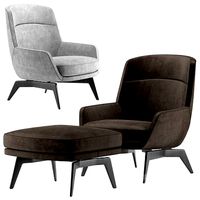
belt
...d then comes off and fastens at the front of the seat. version: 2015 units: millimetres x-form: yes polys: 120 950 verts: 163 944
3d_export
$7
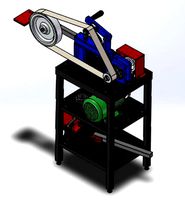
belt grinder
...belt grinder
3dexport
belt grinder
3d_export
$5
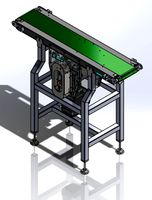
Belt conveyor
...belt conveyor
3dexport
belt conveyor
3ddd
$1

column belt
...column belt
3ddd
колонна
column belt
turbosquid
$5
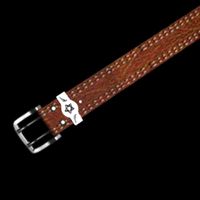
Belt
... available on turbo squid, the world's leading provider of digital 3d models for visualization, films, television, and games.
3d_ocean
$5
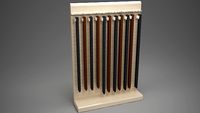
Leather Belt
...ather belt is created in 3dsmax 2011 and rendered with vray 1.5 and it has all the texture included with the multiple obj format.
3d_ocean
$5
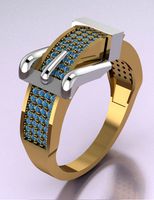
Belt Ring
...belt ring
3docean
belt jewelry ring
belt ring 3d model. total weight 3.5 gram & 1.1 stone size. 3dm and obj file format.
design_connected
$11

Belt Oval
...belt oval
designconnected
meridiani belt oval computer generated 3d model. designed by parisio, andrea.
design_connected
$11
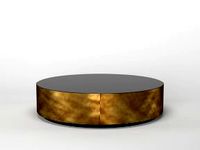
Belt Round
...belt round
designconnected
meridiani belt round computer generated 3d model. designed by parisio, andrea.
design_connected
$11
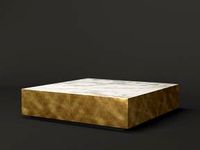
Belt Square
...belt square
designconnected
meridiani belt square computer generated 3d model. designed by parisio, andrea.
Axis
3ddd
$1

Мария Axis
...
3ddd
кухня , классическая , axis
модель кухни.
3d_export
$22
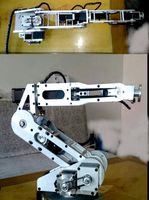
Axis robot 6-axis robotic arm
...ing parts drawings, standard parts purchased parts list, can be produced directly according to the drawings, welcome to download!
3ddd
free

Versatile Axis
...ddd
nexus , плитка
http://bvtileandstone.com/ceramic-porcelain/versatile-axis/
3d_export
$19
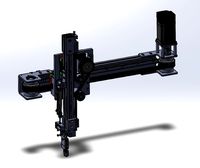
robot 2 axis
...robot 2 axis
3dexport
robot 2 axis
turbosquid
$40

Axis R5F
... available on turbo squid, the world's leading provider of digital 3d models for visualization, films, television, and games.
turbosquid
$40
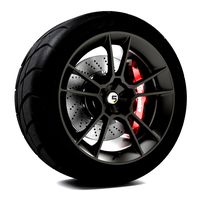
Axis S5F
... available on turbo squid, the world's leading provider of digital 3d models for visualization, films, television, and games.
turbosquid
$30
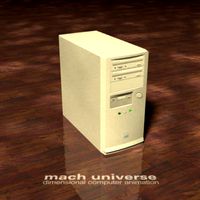
Axis Athlon
... available on turbo squid, the world's leading provider of digital 3d models for visualization, films, television, and games.
turbosquid
$10
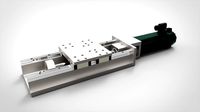
Linear Axis
... available on turbo squid, the world's leading provider of digital 3d models for visualization, films, television, and games.
3d_export
$15

drawing axis
...drawing axis
3dexport
simple rendering of the scene file
3ddd
$1
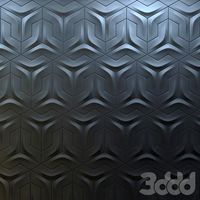
versatile axis ARC
...versatile axis arc
3ddd
versatile , плитка
versatile axis arc red dot design award
Z
3d_export
$5
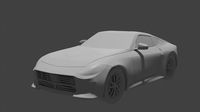
nissan z
...nissan z
3dexport
nissan z
3ddd
$1

Vase Z
...vase z
3ddd
vase z
3ddd
$1
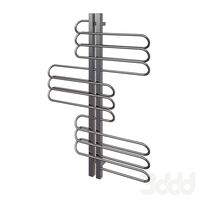
полотенцесушить Z
...полотенцесушить z
3ddd
полотенцесушитель
полотенцесушить z
design_connected
free
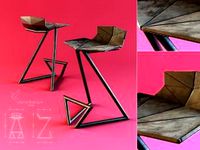
Z-Chair
...z-chair
designconnected
free 3d model of z-chair designed by karman, aleksei.
design_connected
$11
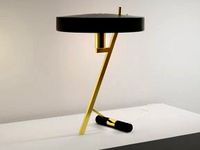
Z Lamp
...z lamp
designconnected
phillips z lamp computer generated 3d model. designed by kalff, louis.
3d_export
$5
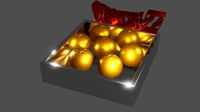
Dragon balls z
...dragon balls z
3dexport
dragon ball z
turbosquid
$20

Fighter Z
...
turbosquid
royalty free 3d model fighter z for download as on turbosquid: 3d models for games, architecture, videos. (1292563)
turbosquid
$9

Pen Z
...pen z
turbosquid
free 3d model pen z for download as obj on turbosquid: 3d models for games, architecture, videos. (1686775)
turbosquid
free
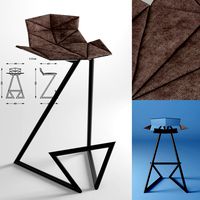
z chair
...z chair
turbosquid
free 3d model z chair for download as max on turbosquid: 3d models for games, architecture, videos. (1410230)
turbosquid
$5

Letter Z
...urbosquid
royalty free 3d model letter z for download as max on turbosquid: 3d models for games, architecture, videos. (1408540)
